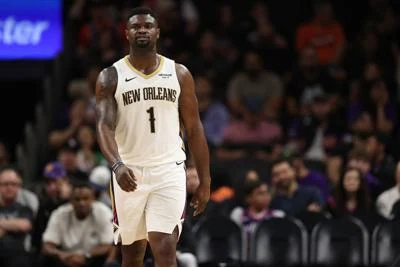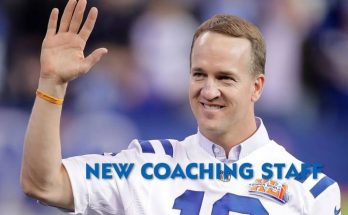The world of sports has always been a stage where heroes are made, legends are forged, and dreams come alive. Athletes who reach the pinnacle of their professions often become role models admired by millions. However, the shadows that lurk behind the glamour and the fame can sometimes reveal unsettling truths, reminding us that public figures, no matter how adored, are human and vulnerable to controversy and scrutiny. Recently, the sports community was rocked by a startling development involving a former Duke basketball star who now finds himself at the center of a deeply troubling legal battle. The former standout athlete has been sued over serious abuse allegations, shocking fans and casting a long shadow over his once-promising career.
This lawsuit has sent ripples not only through the basketball world but also through the broader conversation about accountability, the responsibility of athletes as public figures, and the importance of confronting abuse allegations with transparency and seriousness. The allegations, which include claims of abusive behavior over a prolonged period, come as a jarring revelation given the athlete’s previously unblemished reputation during his collegiate and early professional years. The suit alleges a pattern of abusive conduct that the plaintiff, whose identity has been kept confidential, claims to have endured at the hands of the former Duke star.
The former player, who rose to prominence with his incredible skills on the court, leadership qualities, and charisma, had been widely celebrated throughout his college career. Duke University, known for its storied basketball program, often produces NBA-level talent, and this player was no exception. He was hailed as one of the most promising young athletes of his generation, with many predicting a bright future in professional basketball. Fans and analysts alike followed his trajectory with keen interest, eager to see how his skills would translate to the professional leagues.
However, the glowing image that many held of the athlete has been severely tarnished by the emergence of these allegations. The lawsuit describes a series of disturbing incidents that paint a picture of emotional and physical abuse. While the exact details remain confidential due to legal restrictions, the accusations allege manipulation, intimidation, and harm inflicted on the plaintiff during the course of their relationship. Such serious charges are not only damaging to the athlete’s personal and professional reputation but also raise important questions about how abuse cases involving high-profile figures are handled both legally and socially.
In response to the lawsuit, the former Duke star has issued a public statement denying all allegations. His legal team has called the claims “categorically false” and indicated that they intend to vigorously defend their client in court. They emphasize the importance of due process and caution against rushing to judgment based on unproven accusations. This response is not uncommon in cases involving public figures, who often find themselves fighting to protect their name amid intense media scrutiny and public speculation.
Despite these denials, the lawsuit has already prompted discussions within the sports community about the culture surrounding athletes, the pressures they face, and the importance of addressing abuse and misconduct head-on. Organizations, fans, and fellow athletes are grappling with how to reconcile their admiration for talent with the need to hold individuals accountable when allegations of wrongdoing arise. The case underscores the delicate balance between respecting legal processes and acknowledging the voices of survivors who come forward with painful stories of abuse.
The former Duke basketball star’s situation also highlights broader societal issues related to abuse allegations and the challenges survivors face when seeking justice. In many cases, survivors encounter skepticism, victim-blaming, and institutional barriers that can discourage them from coming forward. When the accused is a well-known public figure, these challenges can multiply, making it even more difficult for the truth to emerge. The legal system, media coverage, and public opinion all play significant roles in shaping the narrative and the outcome of such cases.
This lawsuit could become a watershed moment for how abuse allegations in the sports world are treated moving forward. It may encourage more survivors to speak out, knowing that their voices can be heard, even when the accused holds significant influence or fame. Additionally, it could spur sports organizations and universities to implement stronger safeguards, education programs, and support systems to prevent abuse and ensure a safe environment for all involved.
The reaction from the Duke community has been mixed. While many alumni and fans expressed shock and disappointment, there have also been calls for patience and respect for the legal process. Some former teammates and coaches have declined to comment publicly, choosing instead to wait for more information before forming opinions. Others have voiced support for the plaintiff, emphasizing the importance of believing survivors and taking allegations seriously. This diversity of reactions reflects the complexity and sensitivity of such cases, particularly when they involve beloved figures.
Media coverage of the lawsuit has been extensive, with sports networks, national news outlets, and social media platforms all weighing in on the story. The intense public interest illustrates how deeply intertwined sports figures are with popular culture and how allegations like these can dominate headlines, sometimes overshadowing the sport itself. The media’s role in covering such cases is crucial, as it can influence public perception and awareness. Responsible journalism that prioritizes accuracy, fairness, and respect for all parties involved is essential to ensuring that the story is told responsibly.
As the legal proceedings unfold, the former Duke basketball star’s future remains uncertain. The lawsuit could have far-reaching implications for his career, endorsements, and legacy. Sponsors and professional teams often distance themselves from athletes embroiled in scandal, particularly when allegations involve abuse or misconduct. Even if the athlete is eventually cleared of wrongdoing, the damage to his reputation may linger. Conversely, if the allegations are proven true, the consequences could be severe, including potential criminal charges, financial penalties, and permanent harm to his public image.
Beyond the legal and career implications, this situation serves as a reminder that no individual is above accountability, regardless of their status or achievements. It challenges the sports world—and society at large—to confront difficult issues that are sometimes swept under the rug in favor of protecting reputations or preserving the status quo. It calls for a culture that prioritizes respect, safety, and justice, where survivors feel empowered to speak out and where allegations are met with earnest investigation rather than denial or dismissal.
In conclusion, the lawsuit filed against the former Duke basketball star over abuse allegations represents a significant and sobering moment in sports and society. It shines a light on the complexities of handling abuse accusations involving high-profile individuals and the necessity of balancing legal rights with empathy for survivors. While the court of public opinion is already active, the legal process will ultimately determine the facts of the case. Until then, this story stands as a powerful reminder of the ongoing need for vigilance, accountability, and compassion in addressing abuse — in sports and beyond.



